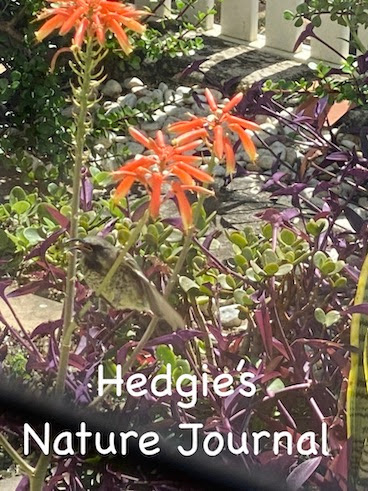The front entrance of my home, densely framed by two species of Karee - Karee viminalis (White Karee) and Karee lancea (black Karee) as well as various indigenous grasses and aloes.
::
::
I've had a couple of requests to 'share' a bit more about where I live on my little piece of African soil. This is my home in Tarlton, South Africa, situated on an 8.5ha smallholding. When landscaping my garden about 7 years ago, I took inspiration from Africa, and nature in particular, choosing to plant only indigenous trees, shrubs, grasses and flowers, with the result that I have a rather wild garden with not much colour, as indigenous flowers and shrubs tend to be less spectacular than most exotic plants, which just don't do well in our climate at all, with very hot and sometimes dry summers and winters that can dish out the coldest of frosts.
I am not ostentatious by nature and prefer the simple and natural things in life. Here I can putter around in my old garden clothes and find my way back to a place that feels right - weeding does that for me. Here I can dream BIG dreams, not all of which become reality but I certainly have fun along the way!
Hope you enjoy, I know I just LOVE to see other people's living spaces, be it small or large, simple or ornate, in suburbia or the country, in a basement or a sky-scraper, inland or at the coast.
::
Hope you enjoy, I know I just LOVE to see other people's living spaces, be it small or large, simple or ornate, in suburbia or the country, in a basement or a sky-scraper, inland or at the coast.
::
A garden ornament hanging from a Karee Viminalis (White Karee), and Jacko, our Fox terrier, sitting at the front door
An old (and now rusty!) paraffin lamp provides some light at night. On the corner of the pathway is a clump of Restio (Cape Reed grass) and right at the back is planted some Tiger Grass (Miscanthus). Grown in India, Australia and Madagascar, South Africa and other warmer countries in Europe, Tiger grass is believed to be the grass that the Bengal tiger uses to clean and maintain its sleek coat. "With the knowledge that the animal kingdom is more in tune with its habitat, Bengal tigers roll around in this grass to soothe wounds and skin irritations, devouring its leaves while waltzing around!" (Don't ask me if that's true, I read it on a Miscanthus site while looking for info on this plant and now can't remember where it was!)
The Tiger Grass gets these beautiful white plumes at the onset of winter before dying down.
One of the many bird baths in my garden. An old log is being cleaned up by some termites.
::
::
My vantage point on the patio from where I survey the birds and my garden. Nothing like a warm cup of tea and a sketch-book while watching their antics at the bird feeders! A concrete-relief gecko adorns the patio wall.
A carport turned Studio/Potting shed. Here I pot and plant to my heart's content, sometimes sketching and painting here while my resident Swallows chatter with me.
My Studio cum Office - which often spills over to the kitchen table below!
::
A hailstorm we had a couple of weeks ago - just about destroyed half the garden! It was actually much worse than the pic shows, which was taken once I dared set foot outside and half of it had melted already from the rain that followed!
::
::
Even though it's almost only the beginning of February, I can see by the way the setting sun is moving and the chilly mornings that the season is turning and soon we'll be heading for Autumn.
::
I live in this world I have made for myself.
::
::
I live in this world I have made for myself.
::


















































